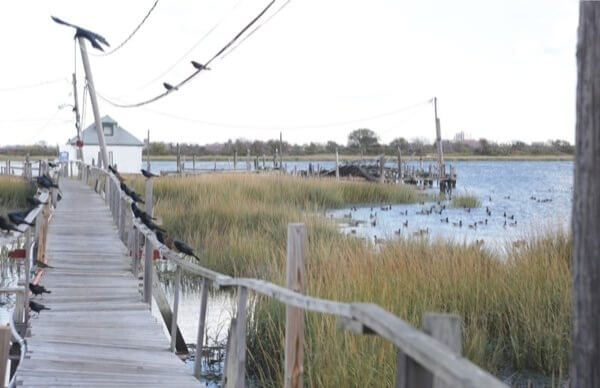By Naeisha Rose
The city’s Department of Environmental Protection, environmentalists and elected officials announced a $400 million proposal to improve the ecological health of Jamaica Bay, which has lost approximately 85 percent of its historical wetland coverage over the course of the last 150 years.
“This additional $400 million investment into Jamaica Bay is yet another step forward in making the bay healthier for the surrounding communities and the overall ecological health of New York City,” said state Sen. Joseph Addabbo, Jr. (D-Howard Beach), a member of the Senate Environmental Conservation Committee. “With this funding, DEP will be able to begin expanding several green infrastructure projects as well as restoring many acres of wetlands.”
The proposal was submitted to the Department of Environmental Conservation and if approved, planning and design for the project could begin as soon as 2019, according to the DEP.
Under the Clean Water Act and the DEC Wetland Permit Reviews, the DEP, which is a complement of the larger state agency, must ensure the protection of state-regulated wetlands and follow their regulations.
The Jamaica Bay Improvement Plan includes restoring 50 acres of wetland, seven acres of ribbed mussel installations, salt marshes and environmental dredging, according to the DEP. Once completed, if accepted by DEC, it could improve the air quality and lower summer temperatures with the significant number of new trees and plants that would be built.
“Few parts of the country know how important taking care of the Earth is as well as we do,” said state Assemblywoman Stacey Pheffer Amato (D-Broad Channel). “Investing in this ecological jewel will not only show off the natural beauty of our water and its ecosystem, but will create the next generation of environmentalists to preserve and protect it.”
Alex Zablocki, executive director of the Jamaica Bay-Rockaway Parks Conservancy, said he was pleased with the announcement and hopes the plan gets approved.
“Jamaica Bay is host to over 300 species of birds and diverse marine life dependent upon wetlands, marsh islands and upland forest,” Zablocki said. “Green infrastructure projects will help stabilize and restore these precious resources supported by the Jamaica Bay-Rockaway Parks Conservancy.”
In May, the DEP invested $23 million to upgrade the Rockaway Wastewater Treatment Plant to reduce the discharge of nitrogen in the bay in order to prevent excessive algae formation from corroding marshlands that help to protect the shoreline and from killing marine life, which acts as food for migratory birds.
Restoring the wetlands at Jamaica Bay will help to filter impurities from the water, protect from coastal erosion during major storms, provide a habitat for fish, reptiles and birds, and prevent sewage overflow in coastal communities, according to environmentalists.
“After years of advocating for the bay, it is very encouraging to see the numerous environmental projects ‘turning the tide’ on the health of the bay and producing water quality and restored habitat that guarantees a thriving Jamaica Bay for future generations,” said Dan Mundy, of Ecowatchers, a preservation group that advocates for the protection and enhancement of Jamaica Bay.
The Jamaica Bay Improvement project would also expand on the city’s Green Infrastructure Program to design and construct sustainable green roofs, rain gardens and sidewalks that promote natural water movement and collects and manages stormwater runoff to keep it out of the sewers, according to nyc.gov.
These programs would be implemented areas near Jamaica Bay like Northern Channel, Inner-Bay and Rockaway Shore, according to the DEP. Thurston, Bergen and Paerdegat basins would be included, as well as Spring, Fresh and Hendrix creeks.
Reach reporter Naeisha Rose by e-mail at nrose



































